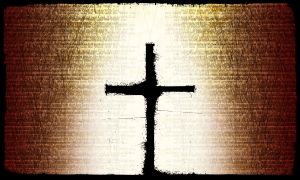 There are four gospels – Matthew, Mark, Luke, John – which give us four unique accounts of the life, teaching, deeds, and demands of Jesus.
There are four gospels – Matthew, Mark, Luke, John – which give us four unique accounts of the life, teaching, deeds, and demands of Jesus.
Why four? Why not just one?
The Bible teaches a principle that any matter would be established by two or three witnesses (Numbers 35:30; Deuteronomy 17:6, 19:15; Matthew 18:16). In the case of Jesus and His identity, there are four testimonies.
Also, though each of the gospels set forth the same truth that Jesus is the Christ, the Son of God, it is obvious in reading that each was written to a different culture or people. Different audiences requiring different emphases require different approaches. Though the authors all set forth the same fundamental truth, they did so with respect toward those to whom they wrote. Thus, the four gospels complement each other perfectly. Matthew writes to a Jewish audience to show that Jesus is the Messiah of Israel; Mark writes to a Roman audience and shows Jesus as the suffering servant who is the powerful Son of God; John writes that all may believe Jesus is God’s Son (John 20:30-31).
Now consider THE GOSPEL OF LUKE.
The third gospel was written to Greeks by the physician Luke (Colossians 4:14), who also wrote the book of Acts (compare Luke 1:1-4 with Acts 1:1-2). Luke is an exceedingly historical book. He writes of things “most surely believed” among Christians, that which was confirmed by “eyewitnesses,” and with a purpose that we might know “the certainty of those things” concerning Jesus. Luke demonstrates that Christianity is based on reliable, accurate, certain, definitive facts. Luke shows how God entered into the course of human history to give His Son for the lost among men.
Luke shows us the Son of God who is also the Son of man. Jesus, the one who came to redeem all men, is the compassionate One – sympathetic toward and concerned about Jews and Gentiles, men and women, young and old, pagans and publicans, the respectable rich and the pitiful poor. Luke’s portrait is of a universal Savior!
 Luke’s audience––the Greeks––emphasized wisdom and beauty, and so Luke shows us a picture of Jesus as the very ideal of wisdom and beauty. Luke shows Jesus as the perfect man, as the ideal man! Consider the following brief outline of the book:
Luke’s audience––the Greeks––emphasized wisdom and beauty, and so Luke shows us a picture of Jesus as the very ideal of wisdom and beauty. Luke shows Jesus as the perfect man, as the ideal man! Consider the following brief outline of the book:
-
JESUS THE PERFECT (IDEAL) MAN IN RELATIONSHIP, Luke 1:1 – 4:13
Jesus came into the world as its Savior, and grew mentally, physically, spiritually, and socially (Luke 1:30-33; 2:10-14; 2:52).
-
JESUS THE PERFECT (IDEAL) MAN IN AUTHORITY & COMPASSION, Luke 4:14 – 9:50
Jesus demonstrated His power in miracles, exercising authority over demons, disease, defilement, and even the mighty forces of nature, and showed His compassion toward His disciples, the infirm, doubters, and the bereaved.
-
JESUS THE PERFECT (IDEAL) MAN IN MESSAGE, Luke 9:51 – 19:28
Jesus taught with perfect wisdom, in parables and instruction, and discoursed concerning such subjects as prayer, hypocrisy, covetousness, faithfulness, repentance, the kingdom, forgiveness, and gratitude.
-
JESUS THE PERFECT (IDEAL) MAN IN PROVISION, Luke 19:29 – 24:53
Jesus made perfect provision – provision for the sins of all mankind. He provides salvation, and we see the preparation for that as He prays in the garden, is arrested and beaten, tried and crucified, and then ultimately risen and ascended!
Read and contemplate some examples of Jesus’ compassion and provision as He teaches about the Lost Sheep (15:1-10), the prodigal son (15:11-24), Zaccheus (19:1-10), and a repentant thief (23:39-43).
Luke shows us that this universal, compassionate offer of salvation is made possible only by and through Jesus, the Son of God who is also the perfect Son of man.
By John Brown
Thank you for the breakdown of Luke. I am reading that book this month, and I appreciate having a little more insight to what I’m reading!